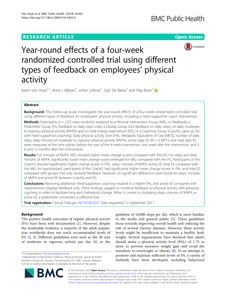We examined the neural correlates of facial attractiveness by presenting pictures of male or female faces (neutral expression) with low/intermediate/high attractiveness to 48 male or female participants while recording their electroencephalogram (EEG). Subjective attractiveness ratings were used to determine the 10% highest, 10% middlemost, and 10% lowest rated faces for each individual participant to allow for high contrast comparisons. These were then split into preferred and dispreferred gender categories. ERP components P1, N1, P2, N2, early posterior negativity (EPN), P300 and late positive potential (LPP) (up until 3000 ms post-stimulus), and the face specific N170 were analysed. A salience effect (attractive/unattractive > intermediate) in an early LPP interval (450–850 ms) and a long-lasting valence related effect (attractive > unattractive) in a late LPP interval (1000–3000 ms) were elicited by the preferred gender faces but not by the dispreferred gender faces. Multi-variate pattern analysis (MVPA)-classifications on whole-brain single-trial EEG patterns further confirmed these salience and valence effects. It is concluded that, facial attractiveness elicits neural responses that are indicative of valenced experiences, but only if these faces are considered relevant. These experiences take time to develop and last well beyond the interval that is commonly explored.
MULTIFILE
An activity-friendly environment may increase physical activity (PA) levels and decrease sedentary behavior (SB). This study investigated associations between socio-demographic characteristics, health-related quality of life (HRQoL), perceived environment and objectively measured PA outcomes. Socio-demographic characteristics were assessed using a questionnaire and HRQoL was measured using the EQ-5D. The Neighborhood Environment Walkability Scale (NEWS-A) was used to assess the perceived environment. SB, light PA (LPA) and moderate-to-vigorous PA (MVPA) were measured using the Actigraph GT3X+. Data from 622 Dutch adults were used in multivariate linear regression analyses to investigate associations between NEWS-A and PA outcomes. Analyses were controlled for socio-demographic characteristics and HRQoL. The presence of attractive buildings was associated with less SB ( = ?0.086, p < 0.01) and more MVPA ( = 0.118, p < 0.01). Presence of destinations within walking distance was also positively associated with MVPA ( = 0.106, p < 0.01). Less crime was associated with less MVPA ( = 0.092, p < 0.05). Interactions between personal and environmental characteristics showed that the absence of PA-hindering characteristics (e.g., heavy traffic) was associated with less SB and more MVPA, but only for residents with problems regarding pain and usual activities. The presence of PA-facilitating characteristics (e.g., aesthetics and destinations) was associated with less SB, more LPA and more MVPA but only for the more advantaged people in society. Results suggest that to reduce health inequalities, it would be more helpful to remove barriers rather than introduce PA facilitating characteristics.
DOCUMENT

Background: This follow-up study investigated the year-round effects of a four-week randomized controlled trial using different types of feedback on employees’ physical activity, including a need-supportive coach intervention. Methods: Participants (n=227) were randomly assigned to a Minimal Intervention Group (MIG; no feedback), a Pedometer Group (PG; feedback on daily steps only), a Display Group (DG; feedback on daily steps, on daily moderateto-vigorous physical activity [MVPA] and on total energy expenditure [EE]), or a Coaching Group (CoachG; same as DG with need supportive coaching). Daily physical activity level (PAL; Metabolic Equivalent of Task [MET]), number of daily steps, daily minutes of moderate to vigorous physical activity (MVPA), active daily EE (EE>3 METs) and total daily EE were measured at five time points: before the start of the 4-week intervention, one week after the intervention, and 3, 6, and 12 months after the intervention. Results: For minutes of MVPA, MIG showed higher mean change scores compared with the DG. For steps and daily minutes of MVPA, significantly lower mean change scores emerged for MIG compared with the PG. Participants of the CoachG showed significantly higher change scores in PAL, steps, minutes of MVPA, active EE, total EE compared with the MIG. As hypothesized, participants of the CoachG had significantly higher mean change scores in PAL and total EE compared with groups that only received feedback. However, no significant differences were found for steps, minutes of MVPA and active EE between CoachG and PG. Conclusions: Receiving additional need-supportive coaching resulted in a higher PAL and active EE compared with measurement (display) feedback only. These findings suggest to combine feedback on physical activity with personal coaching in order to facilitate long-term behavioral change. When it comes to increasing steps, minutes of MVPA or active EE, a pedometer constitutes a sufficient tool. Trial registration: Clinical Trails.gov NCT01432327. Date registered: 12 September 2011
DOCUMENT
